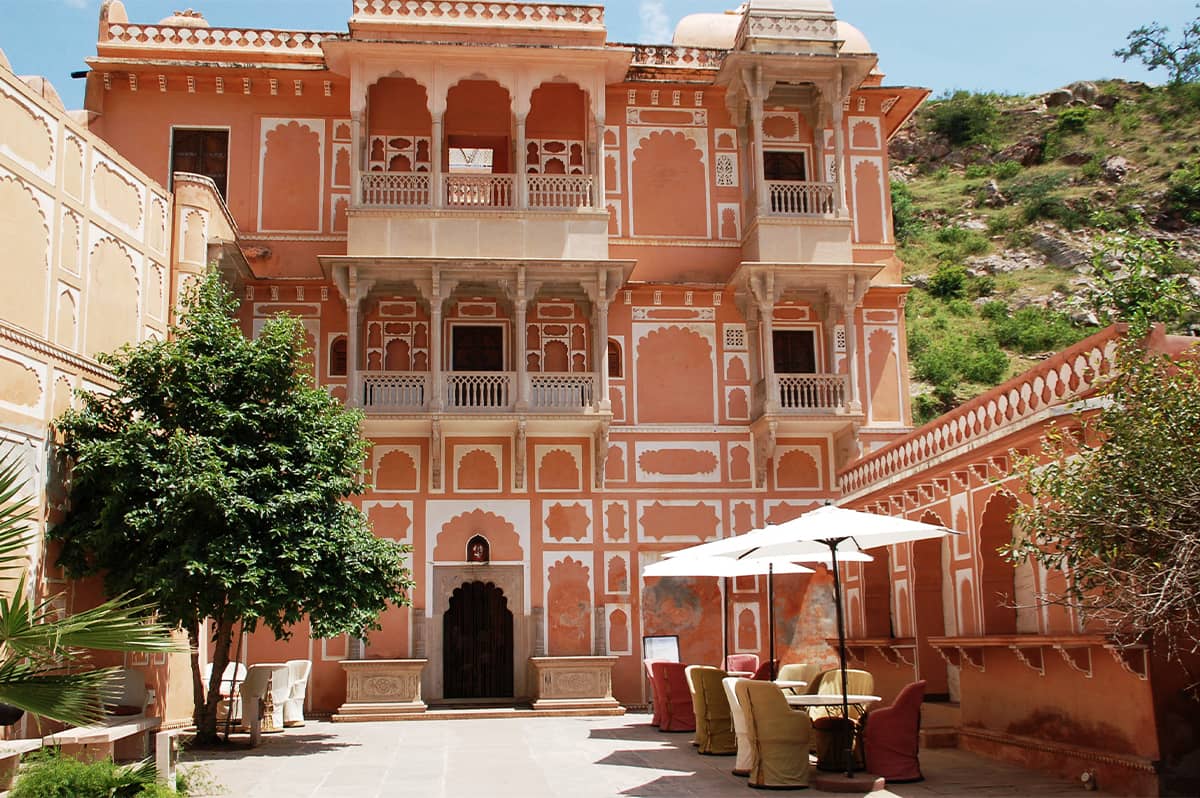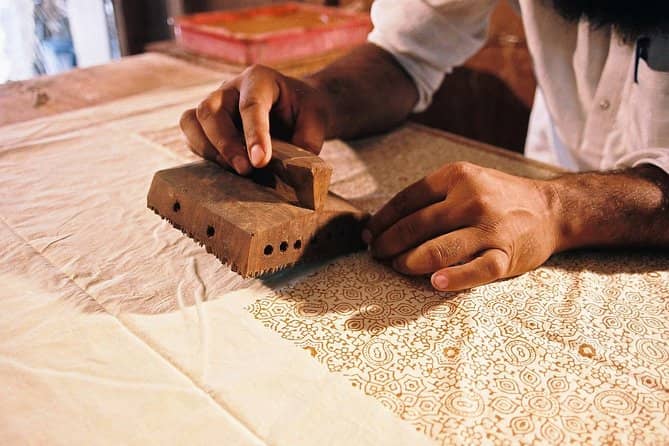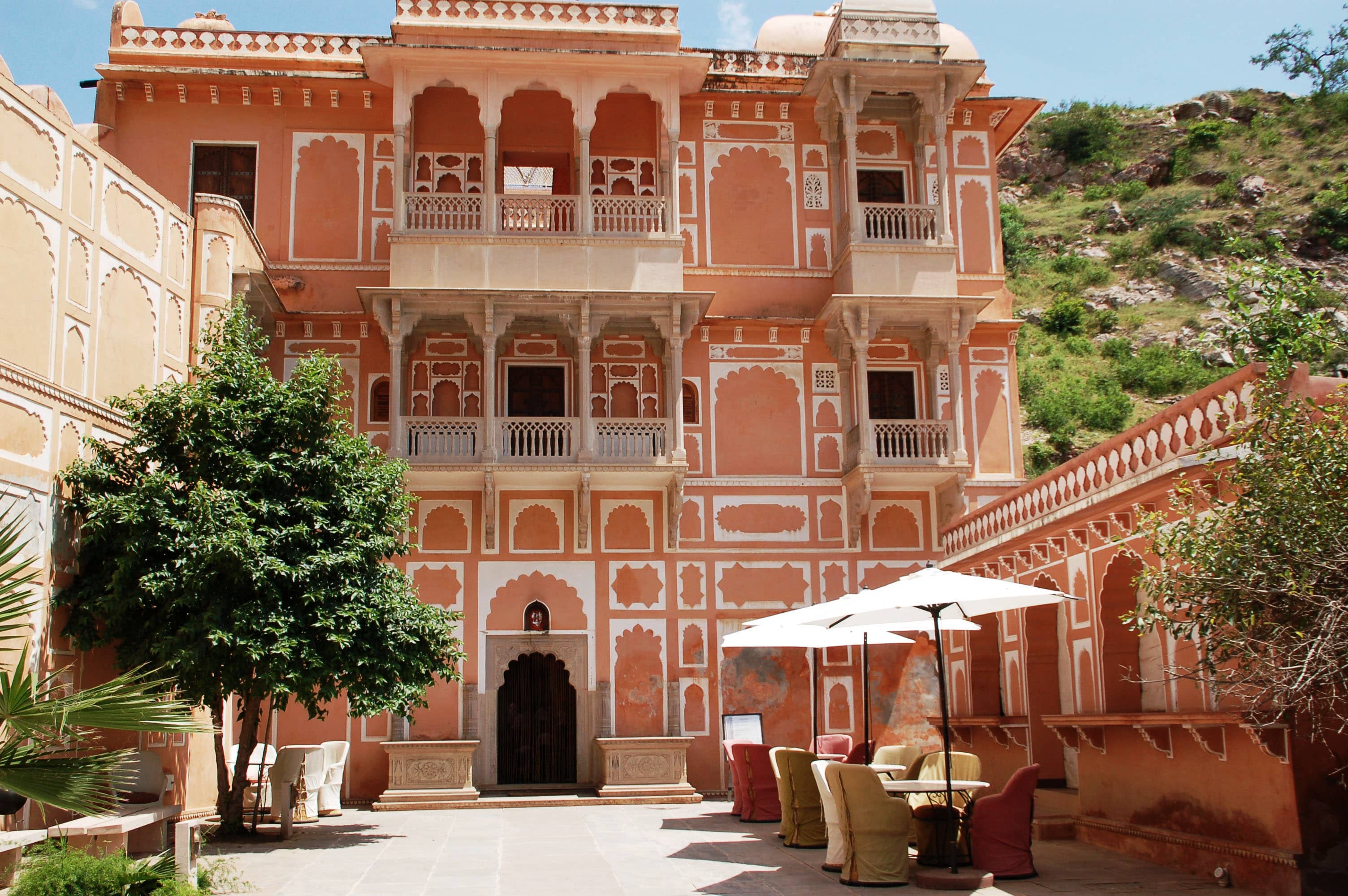Anokhi Museum of Hand Printing
Discover the vibrant art of Rajasthani hand block printing in a beautifully restored 16th-century haveli. Witness live demos & try it yourself!

Highlights
Must-see attractions

Social
From TikTok & Reddit
Best Time
Fewer crowds, more artisan attention
Anokhi Museum of Hand Printing
Best Time
Fewer crowds, more artisan attention

Highlights
Must-see attractions
Discover the vibrant art of Rajasthani hand block printing in a beautifully restored 16th-century haveli. Witness live demos & try it yourself!
"A must-visit for a creative and cultural experience near Amber Fort! Cultural immersion at its best."
Carry Small Cash for Tips
Artisans demonstrating may expect a tip. Have small denominations ready to show appreciation for their skill. :moneywithwings:
Book Workshops in Advance
Hands-on printing classes are popular. Inquire about booking ahead to secure your spot for a creative experience. :ticket:
Highlights
Discover the most iconic attractions and experiences

Live Block Printing Demonstration
Demonstration Area
Witness skilled artisans bring intricate designs to life with traditional woodblocks and natural dyes. A truly mesmerizing display of craftsmanship.

Hands-On Printing Workshop
Workshop Area
Get your hands dirty and create your own block-printed souvenir. A fun, interactive way to appreciate the skill involved.

Restored Haveli Architecture
Museum Building
Explore the beautifully restored 16th-century haveli, a UNESCO award-winning example of traditional Indian architecture.
Plans like a pro.
Thinks like you
Planning Your Visit
Embrace the Art of Block Printing
Tipping Etiquette
Best Times
Insider Tips
from TikTok, Instagram & Reddit
Carry Small Cash for Tips
Artisans demonstrating may expect a tip. Have small denominations ready to show appreciation for their skill. :moneywithwings:
Book Workshops in Advance
Hands-on printing classes are popular. Inquire about booking ahead to secure your spot for a creative experience. :ticket:
Wear Comfortable Shoes
You'll be exploring the museum and potentially participating in workshops. Comfort is key! :athletic_shoe:
Allow Ample Time
Don't rush your visit. Soak in the history, art, and interactive elements. :clock1:
Tips
from all over the internet
Carry Small Cash for Tips
Artisans demonstrating may expect a tip. Have small denominations ready to show appreciation for their skill. :moneywithwings:
Book Workshops in Advance
Hands-on printing classes are popular. Inquire about booking ahead to secure your spot for a creative experience. :ticket:
Wear Comfortable Shoes
You'll be exploring the museum and potentially participating in workshops. Comfort is key! :athletic_shoe:
Allow Ample Time
Don't rush your visit. Soak in the history, art, and interactive elements. :clock1:
What Travellers Say
Reviews Summary
Visitors rave about the Anokhi Museum of Hand Printing, calling it a 'well-known gem' and a 'hidden gem' for its cultural immersion and artistic displays. The live demonstrations and hands-on workshops are consistently praised as highlights, offering a unique and engaging experience with traditional Rajasthani block printing. While the museum's restoration and exhibits are highly appreciated, a few visitors noted an expectation of tips from artisans, which could be managed with prior awareness.
"The Anokhi Museum is a well known gem in Amber! The block printing demo was fascinating, and the hands-on class made it even better. I loved trying the traditional printing myself, it is so much more difficult than it looks. The staff and teacher was kind and patient, and I left with a real appreciation for this beautiful Rajasthani Indian art form. A must-visit if you want a creative and cultural experience near Amber Fort! Cultural immersion at its best."
Jana LaBarbera
"The Anokhi Museum in Jaipur is a hidden gem for anyone interested in traditional Indian crafts. I really enjoyed learning about the art of block printing, the museum is beautifully curated with detailed explanations, historical pieces, and live demonstrations.
One thing to note: during my visit, an artisan demonstrating woodblock printing gestured for a tip after showing us his work. We didn’t have any cash with us at the time, and he seemed a bit upset, saying something in Hindi that we didn’t understand. It wasn’t a huge issue, but it might be helpful for visitors to know in advance that tipping may be expected.
That said, the overall experience was enriching and well worth a visit if you’re in Jaipur and want to explore local craftsmanship in a peaceful setting."
Mandy my PHN
"𝗧𝗵𝗲 𝗖𝗵𝗮𝗻𝘄𝗮𝗿 𝗣𝗮𝗹𝗸𝗶𝘄𝗮𝗹𝗼𝗻 𝗸𝗶 𝗛𝗮𝘃𝗲𝗹𝗶 𝗮𝗸𝗮 𝗔𝗻𝗼𝗸𝗵𝗶 𝗠𝘂𝘀𝗲𝘂𝗺, 𝗔𝗺𝗯𝗲𝗿 |
The Chanwar Palkiwalon ki Haveli, home to the Anokhi Museum of Hand Printing, is nestled in Amber, or Amer, a historic 11th-century military town that cascades down the rugged slopes from the Amber Palace and Fort in the Aravalli foothills. This 16th-century Rajput haveli mansion, built into the perimeter walls, holds a strategic location by the Kheri Gate, reflecting its importance in the fortified town.
Its original owner was likely a distinguished military leader who secured this area. However, when Raja Jai Singh moved his court to the new walled-city of Jaipur in 1727, the local population dwindled, and the town fell into decline.
After lying empty for over 400 years, the haveli was rescued from ruin when John Singh, a founder of Anokhi, purchased the property in 1989 and embarked on a four-year restoration project with architects Nimish Patel and Parul Zaveri of Abhikram. Together, they demonstrated that traditional building methods, implemented by local craftsmen, could be a cost-effective means of preservation.
This outstanding restoration effort earned the haveli a UNESCO award for Cultural Conservation in 2000, celebrating the power of collaborative preservation efforts.
-----------
The Anokhi Museum of Hand Printing was founded by Rachel Bracken-Singh and her husband Pritam Singh. The 16th-century Chanwar Palkiwalon ki Haveli mansion was restored in the 1980s and 1990s using traditional methods and materials, earning a UNESCO award in 2000. The restored haveli was later converted into a museum showcasing hand block printing, with ongoing research and refinement of museum practices. The museum also engages with the local community, educating students and welcoming neighbors and craftsmen to experience the living history of textile heritage."
Souvik Dasgupta
What People Like
What People Dislike
Frequently Asked Questions
🚇 🗺️ Getting There
The Anokhi Museum is located in Amber (Amer), a historic town near Jaipur. You can hire a taxi or an auto-rickshaw from Jaipur. The journey typically takes about 30-45 minutes, depending on traffic. Many visitors combine a trip to the museum with a visit to Amber Fort. :car: :taxi:
Yes, there is usually parking available near the museum, especially if you are arriving by private car or taxi. It's advisable to check with your driver or local contacts for the most convenient parking spots. :parking:
Ride-sharing apps like Uber and Ola are generally available in Jaipur and can often take you to Amber. However, availability for the return journey from Amber might be less consistent, so it's good to have a backup plan or arrange your return with your driver. :iphone:
🎫 🎫 Tickets & Entry
The ticket price for the Anokhi Museum of Hand Printing is typically around 80 INR per person. It's always a good idea to confirm the current pricing upon arrival or check their official website if available. :ticket:
The museum is generally open daily, but hours can vary. It's best to check for the most up-to-date opening times before your visit, as they might differ on holidays or during specific seasons. :clock1:
For general entry, advance booking is usually not required. However, if you plan to participate in a hands-on printing workshop, it's highly recommended to book in advance due to limited spots. :calendar:
Information on specific discounts for students or seniors is not always widely advertised. It's worth inquiring at the ticket counter upon arrival to see if any concessions are offered. :moneywithwings:
🎫 🎨 Onsite Experience
You'll see a fascinating exhibition on the history and techniques of hand-block printing, live demonstrations by artisans, and a beautifully restored 16th-century haveli. You can also participate in a hands-on printing workshop. :art:
Yes, live demonstrations of wood-block printing are a highlight of the Anokhi Museum. Artisans showcase the intricate process using traditional tools and natural dyes. :performing_arts:
Absolutely! The museum offers hands-on workshops where you can learn and practice the art of block printing yourself. It's a rewarding experience to create your own printed item. :handwithfingers_splayed:
Yes, the Anokhi Museum is generally suitable for children. The live demonstrations and hands-on activities can be particularly engaging for younger visitors, offering a fun and educational experience. :child:
The museum is housed in the Chanwar Palkiwalon ki Haveli, a 16th-century Rajput mansion that has been meticulously restored using traditional methods. It's a UNESCO award-winning example of cultural conservation. :building_construction:
🍽️ 🛍️ Shopping & Dining
Yes, the museum has a gift shop that offers a range of products and textiles handmade by local artisans, including block-printed items. It's a great place to find unique souvenirs. :gift:
There is a cafe located just outside the museum that offers refreshments. For more extensive dining options, you would typically find them in Amber town or back in Jaipur. :coffee:
The gift shop features a variety of block-printed textiles, apparel, home decor items, and other handcrafted goods made by local artisans. :dress:
📸 📸 Photography
Photography policies can vary. While general photography might be permitted in some areas, it's always best to check for specific restrictions, especially in exhibition spaces or during demonstrations. :camerawithflash:
The restored haveli architecture, the vibrant block prints, and the artisans at work offer excellent photo opportunities. The setting itself is quite picturesque. :camera:
For Different Travelers
Tailored advice for your travel style
👨👩👧 Families with Kids
Beyond the interactive elements, the museum's setting in a beautifully restored haveli adds an element of historical discovery. It’s a chance to introduce kids to traditional Indian crafts in a fun, accessible way. Remember to bring small cash for potential tips for artisans, and consider the hands-on workshop for a truly memorable family activity. :child: :art: :moneywithwings:
🎨 Art & Craft Enthusiasts
Don't miss the opportunity to participate in a hands-on printing workshop. This is where you can truly connect with the craft, understanding the nuances and challenges involved. The museum's dedication to preserving this art form, coupled with its stunning architectural setting, makes for a profoundly enriching experience. :paintbrush: :thread:
🏛️ History Buffs & Architecture Lovers
Beyond the building, the museum delves into the history of hand block printing, a craft that has been integral to Rajasthani culture for centuries. Understanding the evolution of this art form within its historical context adds another layer of appreciation for the exhibits and the artisans' legacy. :building_construction: :scroll:
Deep Dives
In-depth insights and expert knowledge
The Art of Hand Block Printing
The museum showcases a diverse collection of historical and contemporary block-printed textiles, illustrating the evolution of this craft. From delicate floral motifs to bold geometric patterns, the exhibits highlight the regional variations and artistic expressions found across Rajasthan. The use of natural dyes, derived from plants and minerals, adds another layer of authenticity and environmental consciousness to the art form. A documentary about dyeing processes often complements the exhibits, providing deeper insights into the traditional methods.
For those seeking a more immersive experience, the museum offers hands-on workshops. These sessions allow visitors to try their hand at carving blocks or applying them to fabric, providing a tangible connection to the craft. It's a chance to appreciate the difficulty and beauty of block printing firsthand, often leaving participants with a newfound respect for the artisans' expertise.
A UNESCO Award-Winning Restoration
The restoration was a testament to traditional building methods and materials, executed by local craftsmen under the guidance of architects Nimish Patel and Parul Zaveri. This collaborative approach not only saved the haveli from ruin but also demonstrated the viability and cost-effectiveness of preserving heritage structures using indigenous techniques. The project's success was recognized with a prestigious UNESCO award for Cultural Conservation in 2000, celebrating the power of community involvement and sustainable preservation.
Today, the restored haveli serves as a beautiful backdrop for the museum's exhibits, allowing visitors to appreciate both the art of hand printing and the architectural heritage of the region. Exploring its courtyards and rooms offers a sense of stepping back in time, connecting the present-day craft with its historical context.


Social
from TikTok, Instagram & Reddit